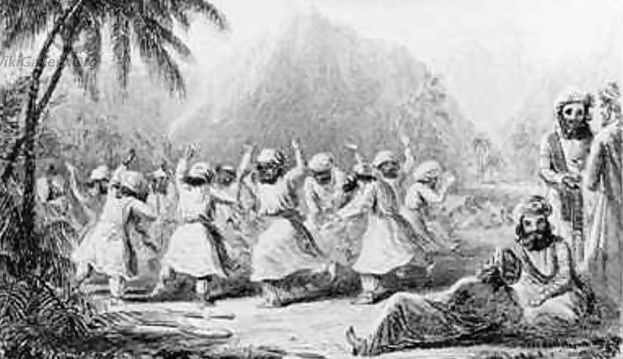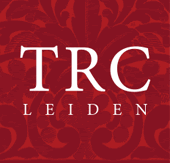The TRC holds some unique garments from Afghanistan, which were worn on special occasions, such as when playing the game of Buzkashi (literally “goat grabbing”), at the so-called Zur-Khana ('House of Strength'), for the Pashtun Atan dance, and for hunting.
Buzkashi is a traditional Central Asian sport played by men on horseback. In Afghanistan it is especially popular in the north of the country. The aim is for the riders to grab the carcass of a headless goat or calf from the ground while riding a horse. A ‘goal’ is scored when the carcass is slung across a goal line, into a target circle or a vat. Games can last several days. The competition is generally very rough as riders try to make each other’s horses trip in order to thwart scoring attempts. Riders wear heavy padded clothing and head coverings in order to protect themselves from the other players’ whips and boots.
!["Cheif [sic] wrestler at Kabul." Water colour by Godfrey Thomas Vigne 1835-1838. Please note the embroidered pair of trousers. 0631](/trc-digital-exhibition/images/0631.jpg) "Cheif [sic] wrestler at Kabul." Water colour by Godfrey Thomas Vigne 1835-1838. Please note the embroidered pair of trousers.
"Cheif [sic] wrestler at Kabul." Water colour by Godfrey Thomas Vigne 1835-1838. Please note the embroidered pair of trousers.
The Zur-Khana is an ancient tradition that is still very popular in neighbouring Iran, but in the past was also popular among the Tajiks and other Persian speaking groups in Afghanistan. Basically it is a ritualised form of working out, using various tools, such as a club and a bow. Participants wear special clothing, and the TRC is fortunate in having one of the characteristic half-long trousers in its collection.

The Atan dance is performed by Pashtun men and boys; they dance around in a circle, often throwing their heads with their long locks of hair wildly around, and moving faster and faster. The TRC collection includes a boy's outfit from Kandahar for the Atan dance, but also a pair of man's dancing shoes from Kabul.

And perhaps not to be classed as pastime, riding a bicyle is also a way of expressing one's taste by decorating the bike with textiles. The TRC collection includes a number of saddle cloths from Afghanistan that are made of decorative carpet woven to shape.
 Atan dance, from the frontispiece of Vol. II of Lt. Arthur Conolly's 'Journey to the North of India through Russia, Persia and Afghanistan,' London 1834.Finally, many Afghan men like to consume tobacco snuff, called naswar, which they put in their mouths under the lower lip or behind their cheeks. Naswar, which is very popular in this part of the world, is a mixture of powdered tobacco and water, lime or juniper. In Afghanistan, naswar is often contained in small gourds that may be decorated with incisions or paintings. The gourd is stopped with a plug of leather.
Atan dance, from the frontispiece of Vol. II of Lt. Arthur Conolly's 'Journey to the North of India through Russia, Persia and Afghanistan,' London 1834.Finally, many Afghan men like to consume tobacco snuff, called naswar, which they put in their mouths under the lower lip or behind their cheeks. Naswar, which is very popular in this part of the world, is a mixture of powdered tobacco and water, lime or juniper. In Afghanistan, naswar is often contained in small gourds that may be decorated with incisions or paintings. The gourd is stopped with a plug of leather.


